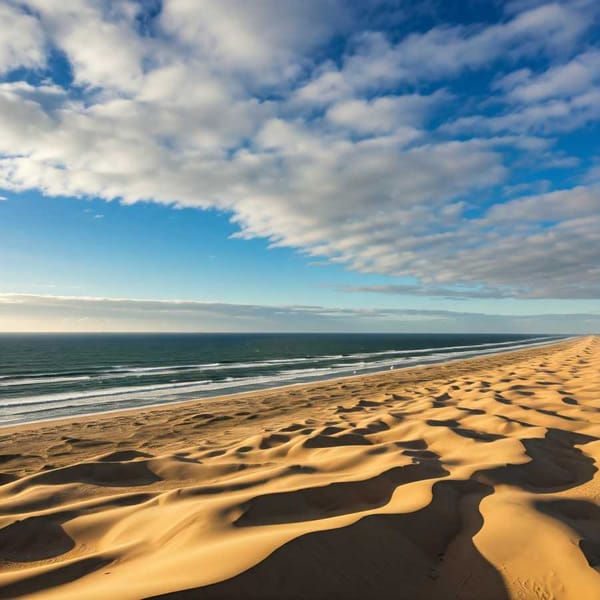Murals by Luis Nishizawa and Gilberto Aceves Navarro
Located south of Mexico City, in Xochimilco: Mural in ceramics I and Mural in ceramics II, by Luis Nishizawa; Apotheosis of Don Manuel Tolsá and the Romantic Muses, by Gilberto Aceves Navarro.

The strokes of teachers and students coexist on the walls of the National University's Faculty of Arts and Design (FAD), consecrated figures accompanied by new voices, eager to someday achieve the same status. Among the murals designed by the faculty, three have achieved a special place in the hearts of those who make up the FAD, located south of Mexico City, in Xochimilco: Mural in ceramics I and Mural in ceramics II, by Luis Nishizawa; Apotheosis of Don Manuel Tolsá and the Romantic Muses, by Gilberto Aceves Navarro.
Luis Nishizawa Flores was born in Cuautitlán, State of Mexico, on February 2, 1918, the result of the relationship between the Japanese Kenji Nishizawa and the Mexican María de Jesús Flores. Throughout his career, he was distinguished by great technical expertise and a continuous crossover of his parents' cultures.
One of the most interesting parts of his work is that he achieved a discipline of two great cultures: Mexican and Japanese. "This made him have a very complex and interesting theme within his development as an artist," considered Mercedes Sierra, professor of postgraduate studies at the FAD and the Faculty of Higher Studies in Cuautitlán.
The specialist added: "The most important thing about Nishizawa is that he was always a great person, a great teacher, and a friend. He gave his classes the old-fashioned way. His workshops truly included this part of the training in techniques, primers, development, and narrations, and in transmitting these processes of gestures and visibility that made his classes and workshops something special.
Not only does the presence of the Mural in Ceramics I and the Mural in Ceramics II demonstrate the importance of the master to the faculty, but a gallery where students exhibit their work bears his name.
"Master Nishizawa possessed a great technique, but not only in one line; he handled tempera, watercolor, glass, ceramics, and engraving. He was truly a complete, integral artist who belonged to a part of the Mexican intelligentsia as part of realism. He has extensive easel work, but his mural work is also important (and for which he is equally known)", distinguished Mercedes Sierra.
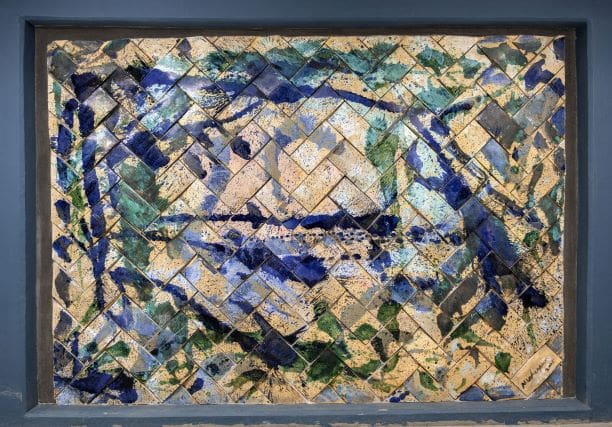
Mural in ceramics I and Mural in ceramics II stand out, as their names indicate, for having been made in high-temperature ceramics, together with their blue and green strokes in different shades. For the specialist, it is a work that fully demonstrates Nishizawa's skills and interests:
"In this work, what we see is an interweaving that seems to emulate a petate or a type of Mesoamerican construction, which the master was always close to. What we observe is not a narrative or a gratuitous construction, but the result of a previous study to achieve this type of process beyond the execution in ceramics at high temperature.
"These two murals belong to another moment of this great creator, in which he tells us: 'well, yes, but there is more beyond just portraying another type of figurative art'. He has a well-thought-out process, with roots in Latin American cultures. "It is developed from elements or objects that we recognize in the handmade textiles of different cultures," she added.
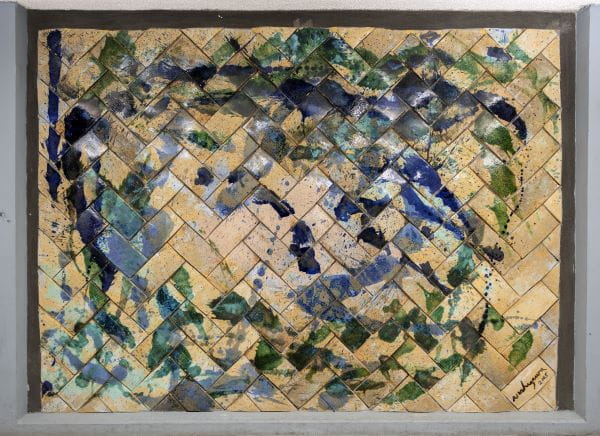
It would be a mistake to consider the murals abstract since their theme is "deeper". She explained: "It speaks of the recognition of the artist, his practice, and the work of artisans. Of the forms that have been used not only in Mexico but in Latin America, it is the weaving of the materials that he wants to emulate, and it becomes much more interesting. It is not the same to weave palms or textiles as doing this exercise with ceramics at high temperatures. That is the master's great success: bringing together two equally important instances into a single work.
Nishizawa's thematic and technical search also connects him with the history of Mexican muralism. "Muralism is that object or art piece that conveys a message. It does not mean that because it does not chronologically tell a story—that is the first school of muralism and has its origin in the post-revolution—it is not included. The Mexican mural current is moving along with a society that is also transforming, "she reflected."
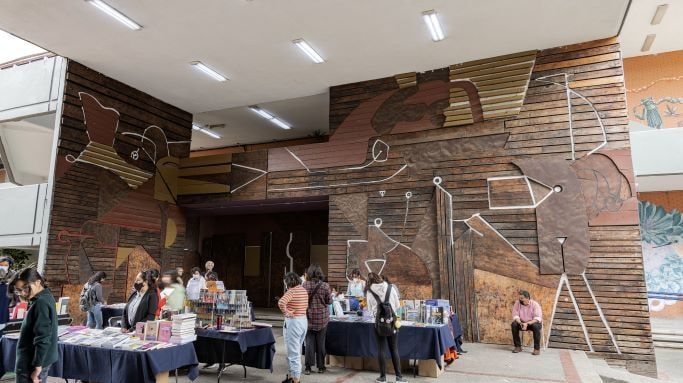
The overflow of emotions
Gilberto Aceves Navarro came into this world on September 24, 1931, in Mexico City. Although he studied at the National School of Painting, Sculpture, and Engraving, La Esmeralda, of the National Institute of Fine Arts, in 1950, his life was soon linked to the National University, since in 1952 he worked with David Alfaro Siqueiros in the realization of the murals of the Rectory Tower. He also taught for more than 40 years in its classrooms.
In addition to training several generations of artists at the FAD, Aceves Navarro bequeathed to its walls one of his most particular works, the mural Apotheosis of Don Manuel Tolsá and the Romantic Muses. Unlike other murals, this one goes across several walls and ceilings. Along its length, it combines different techniques, such as painting and melting materials, with reddish and ocher colors that make it stand out.
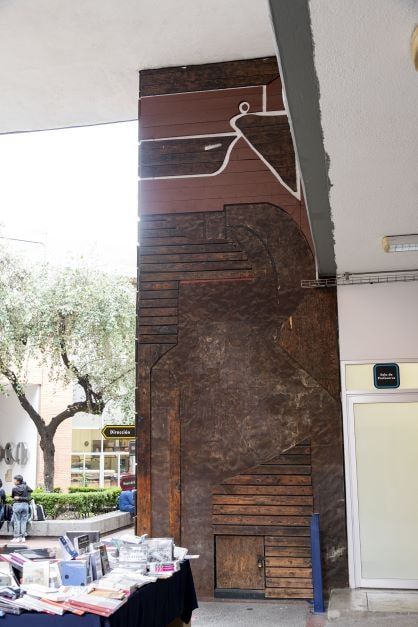
Another peculiarity that distinguishes it is its invitation to be experienced, not just observed. This is how Blanca Gutiérrez Galindo, professor of the postgraduate program at the FAD, sees it: "It adapts this idea to the concept of ambiance in the art of the 1960s and 1970s. It is a new way of making art that goes beyond painting or fine art. It proposes that the viewer's experience be a completely bodily one, that the images and the materiality of the space envelop the viewer, while murals that are on a single wall usually demand a contemplative gaze from the viewer.
"Siqueiros had already made murals to be seen from moving cars. Here it is clear that Aceves is not thinking so much of Siqueiros as of contemporary art, of the trends that during the 1970s expanded the limits of fine art and rethought the function of public art, something he shares with his generation, with artists such as Manuel Felguerez," the specialist pointed out.
For Gutiérrez, the curious title of the piece responds to Aceves' personality—"overflowing, extremely emotional"—and the artist's approach to art history: Apart from that emotional content, there is also a kind of updating of a very important historical moment of the San Carlos Academy: when Manuel Tolsá arrives in Mexico with this shipment of classical sculptures, copies of the Roman originals, which can be appreciated there in the Academy building. They are impressive; there is no other country in Latin America that has them, not even the United States. Manuel Tolsá brings them directly from Europe, along with plasters, materials, instruments, and books that constitute a fundamental collection of UNAM's patrimony.
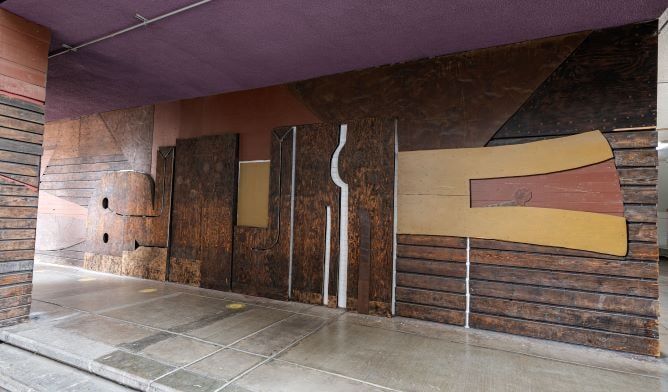
"Interpreting Gilberto Aceves Navarro's intention, I think he wanted to trace a continuity between the past of the classical academy and the art of the moment in which he was making his work. It responds to his generation but also to the very experimental spirit of Aceves, who made sculptures, installations, actions, and paintings with an expressionist tendency; most of his pictorial work—is what defines his importance in the history of Mexican art and also seals his educational work—is neo-expressionist, "argued the professor.
Blanca Gutiérrez expressed that the work invites the spectators to feel "the emotion with the body; the sensations are the forms that one gets to see and that gives one the idea of the theme. If one does not know the title, it is very difficult to imagine that it is a work dedicated to an 18th-century artist, although for Aceves it is very important. The forms elaborated there are not representative but allusive in a very subtle way: lines, blocks, drips, perforations, nails. All that is assembled there alludes to the idea of apotheosis, of ecstasy. It is an encounter of the artist with his muses, with his creative ideas."

